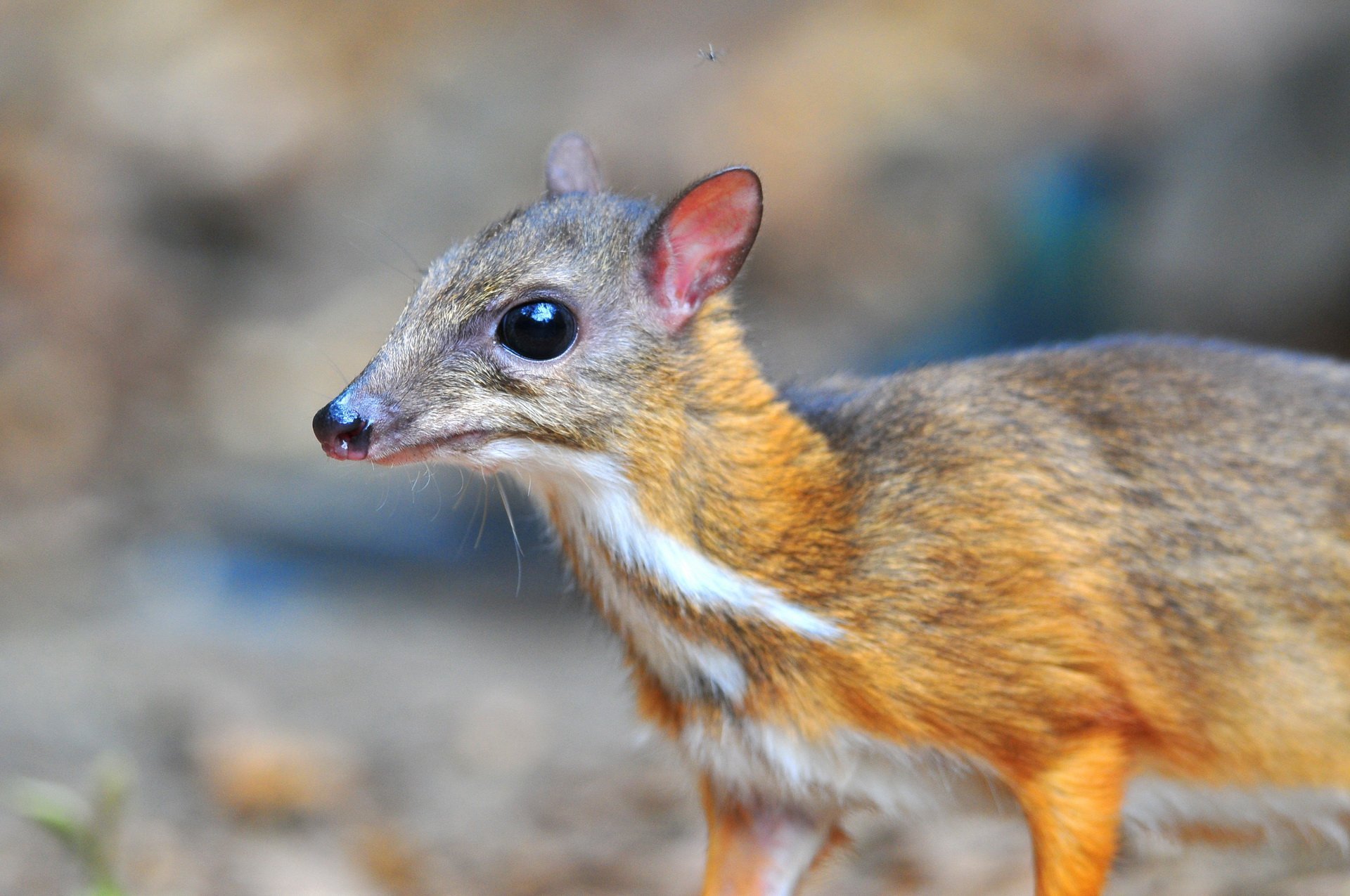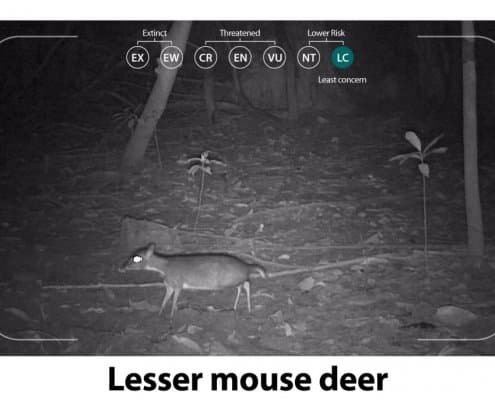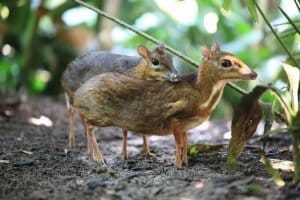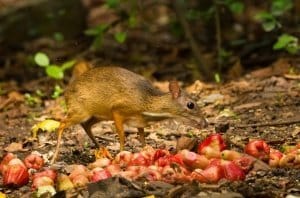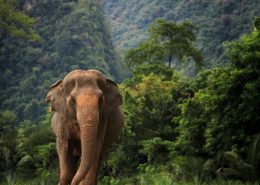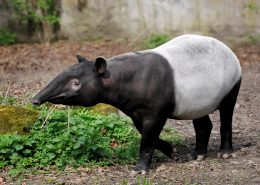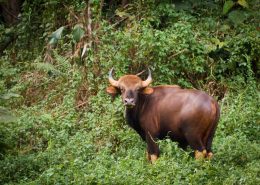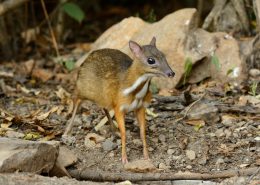Mouse deer
Tragulus kanchil and Tragulus napu
Background:
The mouse deer, or chevrotain, is an incredibly fascinating species and one which science doesn’t yet fully understand. Despite its name, the mouse deer is not a member of either rodent or deer families. In fact, the only link that the mouse deer has to similar-looking animals is that it is an ungulate (hoofed animal), along with mammals such as camels, giraffes, and Khao Sok’s own wild boars and gaur.
There are 1o living subspecies of mouse deer which fall under the family Tragulidae. Historically the terms mouse deer and chevrotain were used interchangeably when discussing these animals,
but they are now often used to describe the different groups of subspecies. The Moschiola genus of mouse deer has a spotted coat, while the Tragulus genus of mouse deer don’t. To make this distinction easier the spotted Moschiola subspecies are referred to as chevrotains, and the plain-coated Tragulus subspecies, mouse deer.
Description:
The mouse deer is notoriously elusive, and like its fellow Khao Sok resident, the tapir, is most active during the night, making sightings rare. However, within Khao Sok National Park our video monitors have captured sightings of two subspecies of mouse deer, Tragulus kanchil and Tragulus Napu, also known as the lesser mouse deer and greater mouse deer, respectively.
The fur of both subspecies of mouse deer is mainly reddish-brown in colour, though the lesser mouse deer is slightly darker. Both have white markings on the neck and a pale belly. The greater mouse deer is so named because it is one of the largest of its kind, while the Tragulus kanchil, or lesser mouse deer, is the smallest hoofed mammal known to man, at only 45cm height when fully grown!
Mouse deer are territorial, but unlike many other hoofed mammals, like our resident barking deer, they have no antlers. Instead, the male mouse deer protects itself with a pair of tusk-like canines. When under threat or agitated, mouse deer rapidly beat their hooves against the ground. Although their legs are only the diameter of a pencil, this creates a drumming sound as the stamping can reach speeds of up to 7 beats per second.
A breakthrough in our understanding of mouse deer was made in 2008 when it was discovered that as a way to avoid predators, mouse deer can submerge themselves underwater for 5 minutes or more. This is incredibly unusual for a mammal of this type and has left researchers scratching their heads. So far it has been confirmed that 3 of the 10 subspecies of mouse deer have this defence technique, but time will tell whether it is common among the other 7.
Both of the mouse deer which can be found in Khao Sok National Park are classified on the IUCN Red list as ‘least concern’, meaning that they are not currently an at-risk animal.
Did you know...?
… that a female mouse deer will spend most of its life pregnant! It is able to become pregnant a mere 1.5 hours after giving birth to a fawn?

